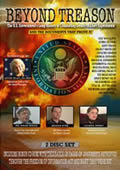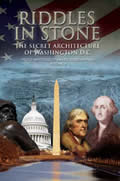PART 5
By
Timothy N. Baldwin, JD.
February 15, 2010
NewsWithViews.com
(Continued) Anti-Secessionist Argument #2: The US Constitution Is Not a Federal Compact of States/Bodies-Politic, but Is an Independent Government Formed by One People/Body-Politic, Without Regard to State Powers.
Federalist Papers
This matter of state ratification was in fact a concern, such that, the states wanted to be certain that their ratification was known to be an assent to a federal compact and would not be misconstrued any other way, since as Hamilton admitted, “the States [did not] prefer a national Constitution.” FP 16. Madison addressed the following regarding the actual formation of the constitution:
“[T]he Constitution is to be founded on the…assent and ratification…as composing the distinct and independent States to which they respectively belong. It is to be the assent and ratification of the several States, derived from the supreme authority in each State, the authority of the people themselves. The act, therefore, establishing the Constitution, will [be a] FEDERAL act… Each State, in ratifying the constitution, is considered as a sovereign body, independent of all others, and only to be bound by its own voluntary act.” James Madison, FP 39 (emphasis added).
Later in his discussion, James Madison admits that the US Constitution is a federal compact and recognized that the states would likely dissolve the compact where the US S CT did not interpret the constitution correctly:
“The decision [by the tribunal] is to be impartially made, according to the rules of the Constitution; and all the usual and most effectual precautions are taken to secure this impartiality. Some such tribunal is clearly essential to prevent an appeal to the sword and a dissolution of the COMPACT.” James Madison, FP 39 (emphasis added).
Proving the point even further regarding the nature and character of the union, James Madison proclaims that the US Constitution was based upon the same principles of the federal compact in the Articles of Confederation:
“The truth is, that the great principles of the Constitution proposed by the convention may be considered less as absolutely new, than as the expansion of principles which are found in the Articles of Confederation.” James Madison, FP 40 (emphasis added). “In a confederacy founded on republican principles, and composed of republican members, the superintending government ought clearly to possess authority to defend the system against aristocratic or monarchial innovations.” James Madison, FP 43 (emphasis added).
Observe: the US Constitution expands the principles of the Articles of Confederation--NOT contradicts them! How can the union go from a federal compact of sovereign states (which is readily admitted to exist under the Articles of Confederation) to a one-body-politic-national government (whereby the states lose all practical sovereignty, confirmed by their success in declaring and winning independence) and still maintain the principles of the Articles of Confederation? What nonsense and absurdity. And this statement was coming from a man biased towards consolidation. If Madison was baiting-and-switching the states, we have a serious problem here (talk about detrimental reliance!) and any constitutional constructions should be held in the light most favorable to those states that were assured they were assenting to a federal compact. The federal government most certainly should not be given the advantage of trickery, subterfuge and fraud.
The fact is, the men attending the constitutional convention acknowledged that the US Constitution would preserve a confederacy form of government, whereby the states retained sovereignty of Nations, just as they did under the Articles of Confederation: “Congress, intent upon the present and future security of these United States, has never ceased to consider a confederacy as the great principle of union.” Jonathon Elliot, Elliot’s Debates, vol. 1 (Philadelphia, PA, Lippincott Co., 1891), 68 (emphasis added). For this reason, Madison was correct to state that the principles forming the US Constitution were the same as for the Articles of Confederation: a federal compact formed by the assent of sovereign states.
US Constitution: A Confederate Republic Maintained
These states knew exactly what they were assenting to when they ratified the constitution: a Confederate Republic. This was readily admitted and known throughout the states and was admitted by even those nationalists, such as Madison and Hamilton. Likewise, founding father James Wilson of Pennsylvania (who was a delegate at the constitutional convention and advocate for ratification in the state convention) says this in the Pennsylvania state convention about the nature of the union under the proposed constitution:
“[I]t was well known, that, however the citizens of the United States might with pleasure submit to the legitimate restraints of a Republican Constitution, they would reject with indignation the fetters of despotism. What, then, was to be done? The idea of a Confederate Republic presented itself.” Stephens, 211.
Quoting well-known philosopher, Charles Montesquieu, Wilson describes that the US Constitution would “have ‘all the internal advantages of a Republic, together with the external force of a monarchical Government.’ Its description is a ‘Convention, by which several states agree to become members of a larger one.” Stephens, 211-212 (emphasis added). The US Constitution was clearly understood to be a Confederate Republic, just as the Articles of Confederation was--a federal compact formed by the assent of sovereign states as several members of a union. Wilson did not describe the union as the whole people forming one nation under one government.
Likewise, Madison referred to the union under the US Constitution as “members of the Confederacy” throughout the federalist papers and Hamilton even held that “the confederacy (under the US Constitution) may be dissolved, and the confederates (that is, the states) preserve their sovereignty…[The proposed Constitution] would still be an association of states, or a confederacy…[with the states possessing] certain exclusive and very important portions of sovereign power.” Alexander Hamilton, FP 9 (emphasis), citing Charles Montesquieu, The Spirit of Laws, vol. 1, book ix., chap. i (1752) (parenthesis added).
A federal compact was not and is not without significant meaning and understanding. Vattel, perhaps the premier authority in this regard, characterizes a federal compact this way:
“[S]everal sovereign and independent states may unite themselves together by a perpetual confederacy, without ceasing to be, each individually, a perfect state. They will constitute a federal republic: their joint deliberations will not impair the sovereignty of each member, though they may, in certain respects, put some restraint on the exercise of it, in virtue of voluntary engagements. A person does not cease to be free and independent, when he is obliged to fulfill engagements which he has voluntarily contracted.” Vattel, 84.
Daniel Webster’s Change of Position
As I noted above, in Webster’s earlier political career, he was one of the most (if not the most) articulate and well-known spokesman for the shrinking of states’ rights, especially their right to nullify and secede. However, after years of intense discussion on the subject, Webster actually dropped out of the debate; and several years later, we see that Webster changed his tune completely.
In The Bank of Augusta vs. Earle (1839), Webster argued before the US Supreme Court regarding the nature of the general government and the state governments in their relation to each other. Here are Webster’s arguments in part:
“It is argued, that though this law of comity exists as between Nations, it does not exist between the States of this Union…In respect to this law of comity, it is said, States are not Nations; they have National Sovereignty; a sort of residuum of Sovereignty is all that remains to them. The National Sovereignty, it is said, is conferred upon this [Federal] Government, and part of the municipal Sovereignty. The rest of the municipal Sovereignty belongs to the States…
“I cannot follow in this train of his argument. I can make no diagram, such as this, of the partition of National character between the State and General Governments. I cannot map it out, and say, so far is National, and so far is municipal; and here is the exact line where the one begins and the other ends…
“There is no such thing as arranging these Governments of course by the laws of gravitation, so that they will be sure to go on forever without impinging…I am not prepared to say that the States have no National Sovereignty.
“The term ‘Sovereignty’ does not occur in the Constitution at all. The Constitution treats States as States, and the United States as the United States; and, by a careful examination, declares all the powers that are granted to the United States, and all the rest are reserved to the States…The States of this Union, are subject to all the voluntary and customary laws of Nations.” Stephens, 390-391 (emphasis added by author).
Daniel Webster could not have said this on public record before the US Supreme Court had he not been enlightened as to the true character and nature of the union. And in fact, Webster’s arguments were accepted by the United States Supreme Court, as they found that the “states of the Union are sovereign states.” Bank of Augusta vs. Earle, 38 U. S. 519, 520 (1839). In Webster’s argument, he even used the Law of Nations’ maxims expounded by Emer De Vattel in his most highly-regarded Law of Nations. From this same authoritative source on the subject, we see the crucial importance of sovereignty in a federal constitutional republic:
“Of
all rights that can belong to a nation, sovereignty is, doubtless, the
most precious, and that which other nations ought the most scrupulously
to respect, if they would not do her an injury.”
Vattel, 289.
For this reason we can emphatically say, Webster’s statements and the US S CT’s ruling regarding the National Sovereignty of the States in this union are more telling than many would care to admit, because it certainly carries with it the rights of the States to secede from this federal union. Eventually, this was the very conclusion that Daniel Webster came to in 1851, when he declared:
“How absurd it is to suppose that when different parties into a Compact for certain purposes, either can disregard any one provision, and expect, nevertheless, the other to observe the rest! I intend, for one, to regard, and maintain, and carry out, to the fullest extent, the Constitution of the United States, which I have sworn to support in all its parts and all its provisions…A bargain cannot be broken on side and still bind the other side…I am as ready to fight and to fall for the Constitutional rights of Virginia, as I am for those of Massachusetts.” Stephens, 404
Effect of Answer
So again, what is the effect of the union being a federal compact assented to by sovereign states? The effect is what the unionists deny: that each state has the right to judge for itself whether the compact has been breached and what remedies it will institute and seek, namely, secession. When these facts are recognized, this is the conclusion:
“It depends on the state itself to retain or abolish the principle of representation, because it depends on itself whether it will continue a member of the Union. To deny this right would be inconsistent with the principle of which all our political systems are founded, which, that the people have in all cases, a right to determine how they will be governed…
“The secession of a state from the Union depends on the will of the people of such state. The people alone, as we have already seen, hold the power to alter their constitutions. But in any manner by which a secession is to take place, nothing is more certain than that the act should be deliberate, clear, and unequivocal. To withdraw from the Union is a solemn, serious act. Whenever it may appear expedient to the people of a state, it must be manifested in a direct and unequivocal manner.” William Rawle, A View of the Constitution of the United States of America, (Dahlonega, GA, Crown Rights Book Co., [1825] 1998), 296, 302.
So in truth, “We the People” did in fact form a more perfect union, but it was not as one body-politic. Instead, it was as the preamble to the constitution says, “We the People OF the United STATES,” where each state decided for itself to make a constitution for that body-politic, and those people alone can determine whether they will unmake that constitution for that body-politic.
|
Subscribe to the NewsWithViews Daily News Alerts! |
These are the principles of limited government. These are the principles of true checks against federal tyranny. These are the principles of a federal compact and federal republic. These are the principles of the Declaration of Independence. These are the principles of freedom. The next article will address, Anti-Secessionist Argument #4: Only the U.S. Supreme Court has the power to determine the lawfulness of a State’s Power and Authority to Secede.
Click here for part -----> 1, 2, 3, 4, 5,
Go to www.libertydefenseleague.com for articles, speeches and interviews of Timothy Baldwin.
Related Article:
1- A Dissenting Opinion on "Secession"
� 2010 Timothy N. Baldwin, JD - All Rights Reserved
Sign Up For Free E-Mail Alerts
Timothy Baldwin is an attorney from Pensacola, FL, who received his bachelor of arts degree at the University of West Florida and who graduated from Cumberland School of Law at Samford University in Birmingham, AL. After having received his Juris Doctorate degree from Cumberland School of Law, Baldwin became a Felony Prosecutor in the 1st District of Florida. In 2006, he started his own law practice, where he created specialized legal services entirely for property management companies.
Like his father, Chuck Baldwin, Timothy Baldwin is an astute writer of cutting-edge political articles, which he posts on his website, www.libertydefenseleague.com. Baldwin is also the author of the soon-to-be-released book entitled, Freedom For A Change, in which Baldwin expounds the fundamental principles of freedom believed by America’s forefathers and gives inspiring and intelligent application of those principles to our current political and cultural standing.
Baldwin is involved in important state sovereignty movement issues, including being co-counsel in the federal litigation in Montana involving the Firearms Freedom Act, the likes of which is undoubtedly a pivotal and essential ingredient to restoring freedom and federalism in the states of America. Baldwin is also a member of freedom organizations, such as The Oath-Keepers, and believes that the times require all freedom-loving Americans to educate, invigorate and activate the principles of freedom within the States of America for ourselves and our posterity.
Web site: LibertyDefenseLeague
E-Mail: tim@libertydefenseleague.com
















